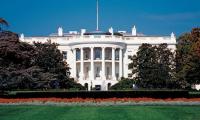Part - II
The Pakistan Federal Union of Journalists (PFUJ) has recently published a collection of articles by senior journalists who have contributed to the struggle of free press in Pakistan. ‘From Layoffs to Lashes: PFUJ’s 70-year fight for media freedom’ is a book that all activists and backers of media freedom must read.
The moving force behind this project was Mazhar Abbas who compiled the articles and supervised the completion of this task. He has also contributed his own experiences both in Urdu and English for this collection. A commendable feature of the book is that it contains English and Urdu articles in the same volume edited by Nizamuddin Siddiqui and Waris Raza. The PFUJ completed its 70 years of existence in August 2020; Mazhar Abbas and Faheem Siddiqui thought it appropriate that Pakistani journalists pay tribute to our visionary predecessors who set up a trade union for ‘safeguarding, and fighting for, our rights merely three years after independence.’
The Urdu section of the book is longer, spanning nearly 300 pages and 36 articles, whereas the English one has over 200 pages with 30 write-ups. Some writers such as Mazhar Abbas and Nasir Zaidi have written both in Urdu and English, while others have preferred to write only in one of the languages. Perhaps it would be a good idea to translate all English articles to Urdu as some of the stalwarts of free expression in Pakistan – I A Rehman, M Ziauddin, M A Siddiqui and Hussain Naqi – have written in detail about the struggle of journalists in the country and their writings must be available to Urdu readers.
Similarly, Iqbal Jafri, Khawar Naeem Hashmi and Masood Ashar have written in Urdu, and English readers should be able to read their translations. Coming to the contents, one must acknowledge the achievements of over 60 journalists who have written about their activities in a bold and continual struggle for press freedom in the country. The journalist community has waged spectacular fights and scored some remarkable victories that were the result of countless sacrifices by both junior and senior journalists of their times. This book is a fine tribute to ‘our founding fathers’, as Mazhar Abbas put it.
The book narrates all major milestones in the PFUJ’s arduous and long journey that we should preserve and record for posterity. The services rendered by our forebears have played a crucial role in challenging authoritarian regimes – both civilian and military – at different periods in our history. The book does not only record our distant past but also has detailed articles about some recent conflicts and disagreements within the journalist community. For example, Afzal But – one of the heavyweights of journalism in recent years – has documented his struggle and highlighted some major issues that emerged in journalists’ unions.
Another feature of the book is that it does not present one-sided stories. Mazhar Abbas persuaded professionals belonging to opposite sides to write their versions of the story. An evidence of this is the story of Pervez Shaukat who had views fairly different from many other leaders in journalism. Juxtaposing these divergent accounts of journalists’ struggle will help the observers, practitioners and students of journalism and media in Pakistan to develop their own understanding of the issues.
Some of the best articles in the book are by Iqbal Jafri, Khawar Naeem Hashmi and Nasir Zaidi, who were three of the four journalists sentenced to the brutal punishment of lashes by the Zia regime. During the dark dictatorship of General Ziaul Haq, in May 1978 a military court gave its verdict to impose exemplary punishment to teach a lesson to those daring journalists who refused to bow in front of a ruthless regime. The prisoners were crammed in a truck and after 9pm in the Central Jail of Kot Lakhpat in Lahore, in front of dozens of other prisoners, Hasmi, Jafri and Zaidi were stripped almost naked and tied to the stand for lashes. The fourth victim, Masoodullah, was spared as he was extremely unwell.
The details of such episodes abound in the book and make you feel sick at the complete disregard for fundamental and human rights that various dictatorships have meted out to activists for democracy in this country. Mazhar Abbas in his article narrates ‘The journey from KUJ to PFUJ’; Mehnaz Rehman in her write-up recalls the last nine days of her beloved husband Ahfazur Rehman, that valiant fighter for free press in Pakistan. Interestingly, in the Urdu section there are only three articles by female journalists: Fauzia Shahid, Freeda Hafeez and Mehnaz Rehman – all worth reading.
In the English section of the book there are only two female writers: Yasmeen Aftab Ali and Myra Imran. Their articles are of particular significance for both men and women in this industry who can get inspiration from the comments and observations Myra and Yasmeen have made. Shehzada Zulfiqar’s article about the history of the Balochistan Union of Journalists is a detailed account of how in that province, our journalists have worked under tremendous pressure from both non-state and state actors. Dozens have fallen victim to the highhandedness of the powerful. Zulfiqar has done a commendable job by documenting this precious history of journalists’ struggle in a province that otherwise remains out of the radar in the rest of Pakistan.
Shahid Iqbal in his article reminisces about the role of Ibrahim Jalees in upholding journalistic values. Bilal Farooqi, Fawad Hasan and Matiullah Jan have penned the stories of their own abductions; threats they have been receiving, and the mental and physical torture they and their families have endured. In the English section of the books some outstanding articles are by Adnan Rehmat, Habib Khan Ghori, Hussain Naqi, I A Rehman, M A Siddiqi, and M Ziauddin.
Some of the salient features of the PFUJ’s creed and performance that I A Rehman has referred to are ‘the union’s resistance to authoritarianism, its conscious avoidance of sectarianism, its insistence on journalists’ professional integrity, and its struggle to fight for the rights of non-journalist staff of newspaper establishments.’ I A Rehman has succinctly presented the long journey of the PFUJ in his piece. M Ziauddin informs us about how General Ziaul Haq employed underhand tactics and ‘abusing the religious sentiments of the people, successfully caused the union to split on ideological grounds –into right- and left-wing groups.’ ‘Subsequently, the union broke into a number of factions, with each of the major media barons having his own pocket PFUJ.’ Ziauddin recalls.
M A Siddiqi is all praise for the PFUJ’s aims and its code of ethics which ‘are laudable and give an inkling of the future-looking ideas of the great minds that drafted it. Each time I read it, I realise that those who wrote these two documents were persons with visions and foresight.’ The most detailed article in the English section is from Hussain Naqi titled ‘Memories of a warhorse’. You can understand a lot about the history of Pakistani journalism by reading this one article.
In short, this book is a gem of a compilation that not only outlines the life history of the PFUJ but is also the history of a journey that spanned over 70 years and is still going on. The crisis that the media in Pakistan are facing now needs persons of courage who can brave the tides of adversity. The book is a must read for all interested in democracy and fundamental rights in Pakistan.
Concluded
The writer holds a PhD from the University of Birmingham, UK and works in Islamabad.
Email: mnazir1964@yahoo.co.uk
Students should grasp concept properly rather than simply regurgitate information during exams
Russian media reports say Assad is right now in Moscow with his family
Everyone in Karachi is billed monthly for water, but many never get this water
Pakistan’s score on democracy index remains above 4 since 2008
Authorities increasingly use broad and sweeping measures to curb internet in face of political crises
President Xi calls upon countries of Global South to “support each other in taking the path to moderniaation”







